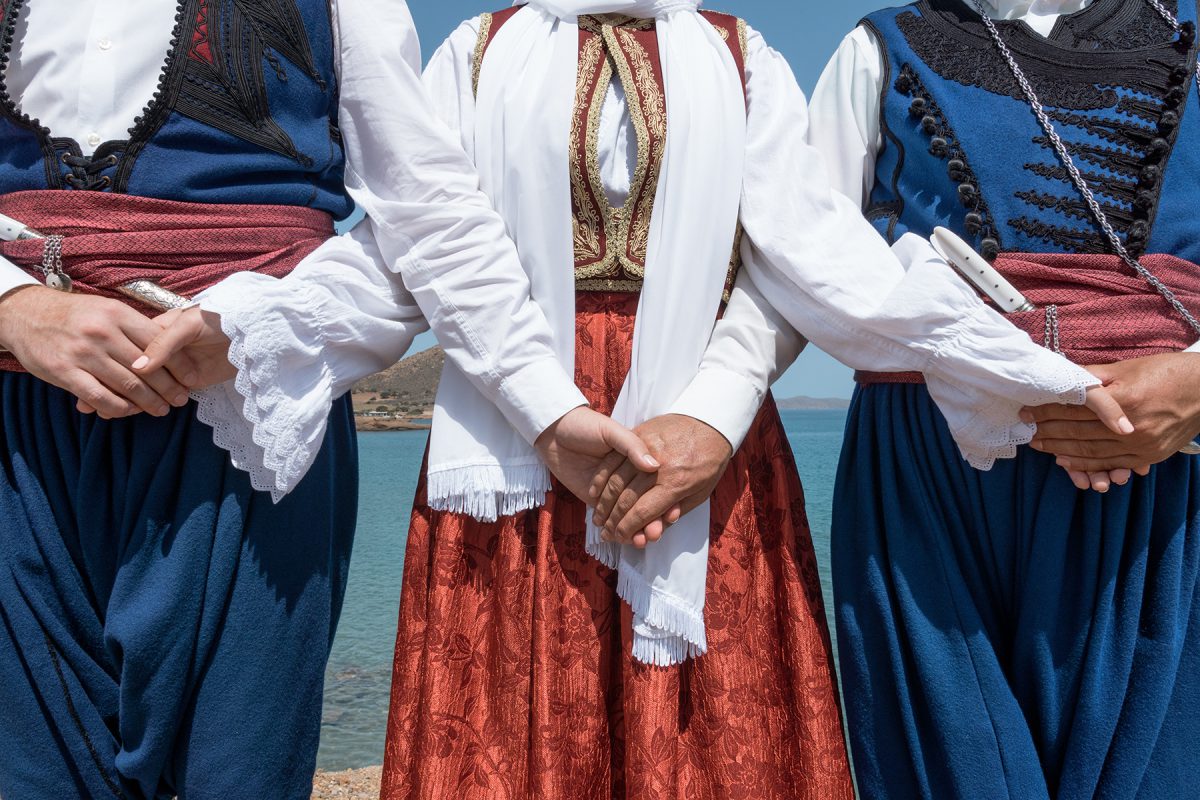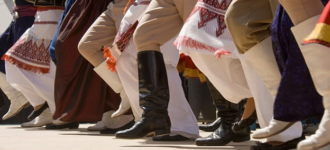
When you visit Crete, you will realize that music and dance is an integral part of the island’s culture and everyday life. Crete is one of the few places in Greece that traditional music & dancing is enthusiastically passed down to new generations and celebrated in almost every social occasion. If you visit Crete in the summer – and especially in August- the chances that you will encounter a traditional feast are very high. The experience can be quite puzzling, as Cretan dances might seem odd and hard to follow and the music will probably sound unfamiliar. If, however, you prepare a bit by acquiring some basic information about Cretan dances and music, the experience can be much more fun and engaging!
The music
Cretan music is defined by the sound of lyra, accompanied by the Cretan lute (laouto), and sometimes a mandolin. The lyra-player is always placed in the center of a Cretan orchestra, and enjoys the perks of a local star! However, lyra might be important (especially in big feasts) but not necessary in Cretan music: sometimes it is replaced by a violin, or a second lute, or even just a mandolin is enough to accompany the famous Cretan serenades (mantinades). In addition, wind instruments, such as the Cretan flute (“hampioli”) and the Cretan bagpipe (“askomantoura”) are older than lyra and play an important role in the Cretan music. The Cretan music tradition is rich and has deep roots in antiquity. It has been influenced by Byzantine music and the music traditions of the wider Eastern Mediterranean and is highly based in improvisation, making each music event really unique!
The Dances
Most Cretan dances are based on the ancient circular form, which is typical in eastern Mediterranean and the Balkans. Dancers form a circle and the first person is “leading”, setting the pace for the rest of the group. The first person is also able (and encouraged) to perform some solo moves and improvisations. The most common circular dances is sirtos (the majority of dances you will see in a Cretan feast belong to this category!), siganos (also the easiest to try), and the most “energetic” ones, maleviziotis and pentozalis. Pentozalis dance is said to originate from the ancient dance “Pyrrihios”, and it is also connected to the myth of Zeus and his guardians, Kouretes. All Cretan dances are circular, except sousta, the only couple dance, where dancers face each other. Most Cretan people know the basic Cretan dances, and there are also regional variations in steps and styles. In Cretan feasts, the dancers follow the rhythm and improvisations for the musicians, and often start slow but end up in ecstasy! Of course, there are many other Cretan dances, but usually only people who took classes know them, as they are not commonly known or danced in feasts. In any case, you should never miss the opportunity to attend a traditional Cretan feast if you find one, as it will be an unforgettable experience. Needless to say, anyone is welcome to join the dancing circle, so feel free to try some new moves!




